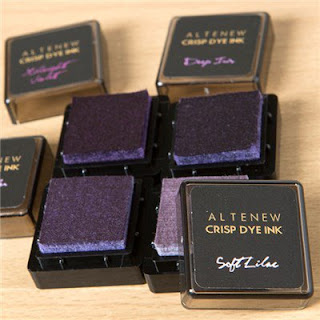The world of inks can be a minefield for a new crafter, with so many types to choose from and each with it's own qualities you're bound to have a few faux pas's. I hope to give up a heads up on the main types of ink and how I use them in my crafting.
Now I may not be Martha Stewart or Sheena Douglass but I like to think I have a good bit of experience, I know only too well how annoying it is when you stamp a perfect image and start to colour it and realise you've used the wrong ink and it bleeds the ink line, this is where the naughty words slip from my lips and my husband calls me potty mouth lol
Here are the inks I currently have in my stash (well not every colour but every type)
Pigment Ink
- Normally comes on a foam pad as the ink is thicker.
- Takes longer to dry as the ink sits on the surface of the card/paper
- blendable
- fade resistant
- stains clear stamps!!!!
Alcohol Ink
- Usually comes in either pen or bottle form
- very blendable
- If using for colouring you will need to stamp in a Memento Ink so as not to bleed your image
Dye Ink
- vibrant colours
- water solubale
- Can stain clear stamps
Water based dye Ink
- Can be used with water to colour imagery
- use on lighter coloured card and paper
- quick drying
- available in lots of colours
- colour fades over time so not good for scrapbooking
Chalk Ink
- permanent when heat set
- similar to pigment inks but with a chalky finish
- great for darker card and paper
Distress Ink
- slow drying so can be used for heat embossing
- can use for water colouring
- blendable
- used to create numerous effects
Versamark Ink
- use for heat embossing
- leaves a tacky substance which you can add mica powders too
I found a very handy reference chart for showing ink properties which may be handy
http://www.paperwishes.com/stamping101/images/layout/inkpads.pdf
I really hope that this post will help those startling off in the world of stamping to avoid some of the issues I had in the early days.
Take care, until next time T x







No comments:
Post a Comment